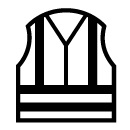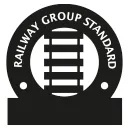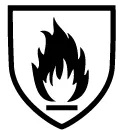EN ISO Standards Explained (PPE & Workwear Clothing)
James
Last Update 4 months ago

EN ISO 20471
High Visibility Clothing
This International Standard specifies requirements for high visibility clothing, which is capable of visually signalling the user’s presence.
The high visibility clothing is intended to provide conspicuity of the wearer in any light condition when viewed by the operators of vehicles or other mechanised equipment during daylight conditions and under illumination of headlights in the dark.
High Visibility clothing has a fluorescent surface, combined with reflective material that meets certification requirements in 3 different classes:
Class 3: Highest Level Highest level of protection – required for any persons working on or near motorways or dual-carriage ways or airports. Must incorporate a minimum of 0.80m2 of background material and 0.20m2 of retro-reflective materials. (4 metres of 5cm wide reflective tape)
Class 2: Intermediate Level Required for any persons working on or near A and B class roads, also for delivery drivers. Must incorporate a minimum of 0.50m2 of background material and 0.13m2 of retro-reflective material. (2.60 metres of 5cm wide reflective tape)
Class 1: Minimum Level Minimum level of protection required for any persons working on a private road or to be used in conjunction with a higher classed garment. Must incorporate a minimum of 0.14m2 of background material and 0.10m2 of retro-reflective material. (2 metres of 5cm wide reflective tape)

RIS-3297-TOM
(Formerly GO-RT 3279)
Railway Group Hi-Visibility Standard for the UK
This UK High Visibility standard is based on the European standard EN ISO 20471.
It requires that the area of fluorescent and reflective materials of the garments reaches at least EN ISO 20471 Class 2.
RIS-3297-TOM only approves specific orange High Visibility materials.
In the UK, individuals working on or near a railway must wear high visibility clothing that meets the requirements of EN 20471 and RIS-3279-TOM

EN342
Protective Clothing against Cold
Clothing that is certified in accordance with EN 342:2017 is guaranteed to protect the wearer from the cold.
Proper clothing is essential when working in cold environments, as it is important that you stay protected and warm.
A cold environment is characterised by a temperature of -5 °C or lower, measured not just on the basis of air temperature, but with consideration paid to humidity and wind as well.
Requirements are set on thermal insulation and air permeability. Resistance to water penetration is an optional requirement.
A = Thermal insulation, measured value
B = Air permeability class (1 – 3 where is best)
C = Resistance to water penetration class (optional) (1-2 where 2 is best)

EN 343
Protective Clothing against Rain
The Foul Weather Clothing Safety Standard EN 343 is a European Standard for protective clothing which is designed to be worn in wet weather.
It takes into consideration the construction of the garment along with the fabric used.
An item is judged on two categories; its ability to protect against precipitation, fog and humidity, while the second measures breathability in those particular conditions. Garments are now rated from one to four in these two categories, with four representing the highest level of protection and one the lowest.
An explanation of the different classes in each category:
Water Penetration Resistance
1 - Minimum level of rain protection
2 - Intermediate rain protection
3 - Very good rain protection
4 - Highest level of rain protection
Breathability
1 - Not classified as breathable under EN343
2 - Intermediate level of breathability
3 - Very good level of breathability
4 - Highest level of breathability

EN ISO 11612
Protective Clothing against Heat & Flame
Protective clothing that complies with EN ISO 11612 protects the user from contact with heat and flames.
Two-piece protective clothing must be worn together and protect the entire body to achieve the right level of protection.
The CE labels inside the garment contains information about the necessary garment combination and which code letters that the garment is certified for.
The garment is classified for the following parameters:
(A1) Limited flame spread
(A2) Limited flame spread, hemmed specimens
(B) Convective heat, scale 1-3 where 3 is the best
(C) Radiant heat, scale 1-4, where 4 is best
(D) Molten aluminium splash, scale 1-3 where 3 is the best
(E) Molten iron splash, scale 1-3 where 3 is the best
(F) Contact Heat, scale 1-3 where 3 is the best

EN ISO 11611
Protective Clothing for use in Welding and Allied Processes
The EN ISO 11611 certified safety clothing must protect the wearer from sparks, brief contact with fire and minimise the risk of electric shock from brief, accidental contact with electrical conductors.
The workwear must cover the whole body in order to obtain optimal protection. This is achieved by using both jacket and corresponding trousers.
The garment is classified for the protection ability against different levels of welding technology, which cause more or less spatter and radiant heat.
Class 1 - Protects against less hazardous welding techniques and situations, causing lower spatter and radiant heat
Class 2 - Protects against riskier welding techniques and situations, which causes higher levels of spatter and radiant heat
EN ISO 11611 also requires that protective suits completely cover the upper and lower torso, neck, arms and legs.
There are additional design requirements which must be followed which are summarised below:
Tensile strength
Tear strength
Bursting strength
Seam strength
Dimensional change
Requirements of leather
Limited flame spread
Molten droplets
Heat transfer (Radiation)
Electrical resistance

EN 61482-2:2020 / EN 61482-2:2018
Protective Clothing against the Thermal Hazard of an Electric Arc
Clothing that is certified in accordance with IEC 61482-2 protects against the thermal hazards associated with electric arcs.
Electric Arc garments come under PPE Regulation Category III.
Fabric properties and garment design are important parameters in the certification process of Electric Arc garments.
There are 2 test methods for the IEC 61482 standard: the Box Test and the Open Arc Test.
BOX TEST – IEC EN 61482-1-2
The arc rating – class 1 or 2 – is evaluated in a test with a limited and directional arc.
In the test, the electric arc is shot against a box where the material or garment is placed.
The result is compared to the Stoll curve, a diagram that shows when you are at risk of a second-degree burn in the event of an electric arc accident.
Test criteria: The material must not melt on the inside, the afterflame must be extinguished in 5 seconds or less and no hole larger than 5mm in any direction can be created.
The result is approved or not approved.
Class 1 = 4 kA (arc energy 168 kJ)
Class 2 = 7 kA (arc energy 320 kJ)
OPEN ARC TEST IEC EN 61482-1-2
Open arc measures protection using the 61482-1-1 test method, which is equivalent to the NFPA 70 US standard.
The method uses an 8 kA circular arc that strikes the test aterial from a distance of 30 cm.
The test results are presented in calories per square centimetre (cal/cm2), revealing at what calorie level the garment offers a 50% chance of protection against second-degree burns as a ATPV or EBT50 value.
The higher the value, the better the protection.
Arc CAT 1 - >= 4 cal/cm²
Arc CAT 2 - >= 8 cal/cm²
Arc CAT 3 - >= 25 cal/cm²
Arc CAT 4 - >= 40 cal/cm²

BS EN 1149-5
Protective Clothing with Electrostatic Properties (Anti-Static)
EN 1149-5 specifies material performance and design requirements for protective clothing with electrostatic properties.
These protective clothes are designed to avoid the risk of incendiary discharge (the formation of sparks), when for example an elbow or a knee is brushed against a wall or similar surface/object.
This is vital when working with flammable materials such as gas or gasoline.
The material performance is based on the material’s surface resistivity, electrical resistance and charge decay.
In order to be fully protected, all non-complying materials and conductive parts (zippers etc) should be fully covered.
In addition, the person must be properly earthed by wearing shoes that allow static electricity to dissipate into the ground.
The test method for EN 1149-5 specifies the requirements for materials and design of safety clothing with electrostatic properties, in order to protect the wearer as best possible.

EN 14404
Knee Protection (Kneepads)
Type 1: Knee protectors independent of other clothing and that fasten around the leg.
Type 2: Knee protectors made of foam plastic or other padding material to be placed in pockets on trouser legs, or permanently attached to trousers.
Type 3: Knee protectors that are not attached to the body, but put in place as the user moves around.
Type 4: Knee protectors for one or both knees, which are parts of devices with additional functions such as a frame to aid standing up, or a kneeling seat.
Performance level 1: Suitable for use on flat or non-flat floor surfaces and providing protection against penetration at a force of at least 100 ±5 N.
Performance level 2: Suitable for use on flat or non-flat floor surfaces in severe conditions and providing protection against penetration at a force of at least 250 ±10 N.

